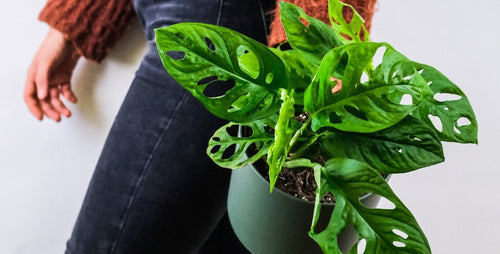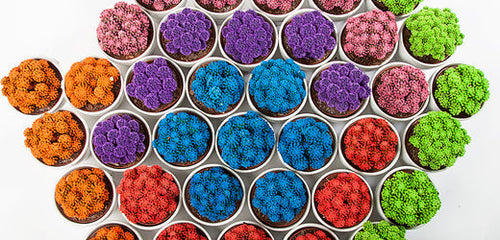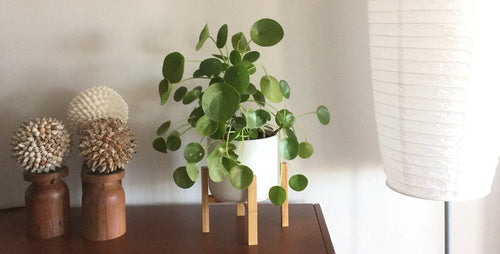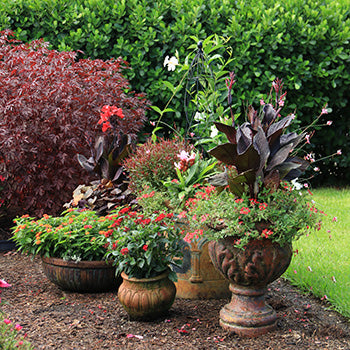By Karen Weir-Jimerson
Elegant, beautiful, easy: Bonsai add a zen-like quality to your home and
office. Few plants are as stylish and sophisticated. Buying and raising a bonsai for your home is easy with these
tips.
Bonsai are sculptural little plants that mimic the stature and beauty of mature trees. This Asian art form of pruning and training a plant to grow in a specific way is centuries old.
.jpg)
What is Bonsai?
Bonsai is a growing method, not the name of a specific plant. Large trees and shrubs found in landscapes can be
trained into bonsai. And many houseplants with woody stems, such as ficus, make beautiful bonsai.
Growing and pruning
your own bonsai can take years, sometimes decades. But our readymade versions allow you to enjoy bonsai right away.
Selecting and caring for a bonsai is easy, and you'll be rewarded with a plant you'll enjoy for years.
Bonsai Species
Our indoor bonsai are trees, shrubs, or tropical plants that are grown in shallow pots and trained look like miniature trees. All bonsai plants must have a woody base that has a tree-trunk look. Some plants have leaves, such as ficus, money tree, and privet. Other bonsai plants are needled, or coniferous, such as juniper.
Buying Tips
1. Look for well-branched plants that exhibit symmetry, balance, and proportion.
2. Choose bonsai whose
shape is beautiful to you. A bonsai is a horticultural work of art and it should fit your sense of aesthetics.
3. Select plants with healthy foliage.

Raising Bonsai Indoors
Although traditional bonsai are grown outdoors, our modern bonsai can be grown indoors. Our plants are nurtured and grown under shade cloth so they are acclimated to growing successfully indoors in your home. Bonsai require care based on what type of species they are. Follow these general guidelines.
Light
The amount of light your bonsai needs depends on the type of the plant you have. Most outdoor trees and shrubs, such as privet and juniper, prefer a bright spot indoors. Tropical species, such as pachira, may prefer indirect light. Here are light requirements for bonsai by species:
- Formosana (Ficus formosana) Formosana bonsai excels in a medium to bright spot and features dark green leaves.
- Fukien Tea (Carmona retusa) Fukien tea thrives in medium to high light and features tiny white flowers when happy.
- Ginseng Ficus (Ficus retusa) Ginseng ficus is an elegant bonsai with small, shiny, dark green leaves; it excels in low, medium, or bright spots.
- Juniper (Juniperus spp.) Juniper likes bright, indirect light and mild temperatures. Watch for spider mites (that make little white webs on the needles). Wash leaves with soapy water and rinse to treat.
- Pachira (Pachira aquatica) Also called money tree, pachira bonsai offers hand-shaped leaves with a beautiful texture. Place in bright, indirect light.
- Privet (Ligustrum spp.) Privet bonsai have uniquely shaped dark green leaves that hug the plant's stems. It does best in medium light, but also grows in indirect, bright light—as well as low light.
Water
Water bonsai once the surface of the potting mix feels dry. If the soil of your bonsai has a layer of stones or a mat of moss on top of it, dig your finger down to meet the soil to determine whether the plant needs water. Don’t overwater bonsai. Keep in mind that most bonsai are planted in shallow dishes and too much water can make the roots drown and die.
Temperature
Bonsai plants should be protected from extreme cold and extreme heat. If you keep bonsai on a sun porch, bring them indoors before temperatures drop. Some species will suffer in temperatures as low as 50 degrees F. (Keep in mind that many bonsai are tropical plants who aren’t used to cold temperatures.) Indoors, keep bonsai out of cool drafts in winter. If sitting near a window, make sure leaves don’t touch cold glass.
Feeding
Fertilize once or twice during the spring and summer months with a general-purpose fertilize made for use on indoor plants.
Pruning
Keep your bonsai looking as beautiful as the day you bought it by pruning off new growth that changes its look as well as clipping off dead or yellow leaves. As your bonsai grows, it’s also necessary to trim the roots. Learn more about bonsai care and pruning.

















